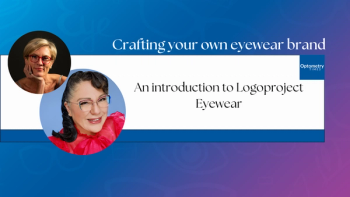
AOA 2025: New ways to fix old issues in scleral lenses
When Langis Michaud, OD, MSc, FAAO, FSLS, FBCLA, FEAOO, began fitting scleral lenses 20 years ago, there was limited knowledge about conjunctival characteristics, scleral shape, and lens behavior.
Langis Michaud, OD, MSc, FAAO, FSLS, FBCLA, FEAOO, provided an insightful overview of the evolution of scleral lens fitting over the past 2 decades. He traced the technological and clinical advancements that have transformed the understanding and application of scleral lenses. When he began fitting scleral lenses 20 years ago, there was limited knowledge about conjunctival characteristics, scleral shape, and lens behavior. Pioneering work by researchers laid foundational groundwork, but significant gaps remained in understanding how to customize lenses for individual patient needs.
A critical observation Michaud shared is that patients consistently prioritize comfort over vision quality. Throughout his 20-year experience, no patient claimed improved vision with scleral lenses, but all emphasized enhanced comfort. This comfort factor has made scleral lenses the primary recommendation for conditions like keratoconus.
Technological advancements have dramatically improved lens fitting and patient monitoring. Michaud highlights 2 particularly transformative technologies: the eye profiler and the aberrometer. The eye profiler allows precise mapping of conjunctiva and sclera, eliminating guesswork and reducing unnecessary patient visits. The aberrometer enables detailed evaluation of high order aberrations, providing concrete data about vision challenges.
The complexity of vision through scleral lenses involves multiple refractive index transitions - from air, to tears, lens, reservoir, and different corneal layers. Modern technology now allows compensation for these complex optical interactions, creating more sophisticated lens designs. However, Michaud emphasized maintaining professional humility. Scleral lenses are not a universal solution, and practitioners must remain open to alternative vision correction methods. The technology offers powerful tools, but also requires significant learning and careful application. The modulated transfer function (MTF) represents another breakthrough, allowing practitioners to quantitatively assess vision quality before and after lens fitting. This enables more precise determination of whether scleral lenses will benefit a specific patient. Ultimately, Michaud's lecture underscored the ongoing evolution of scleral lens technology - a journey of continuous learning, technological innovation, and patient-centered care.
Newsletter
Want more insights like this? Subscribe to Optometry Times and get clinical pearls and practice tips delivered straight to your inbox.














































.png)


